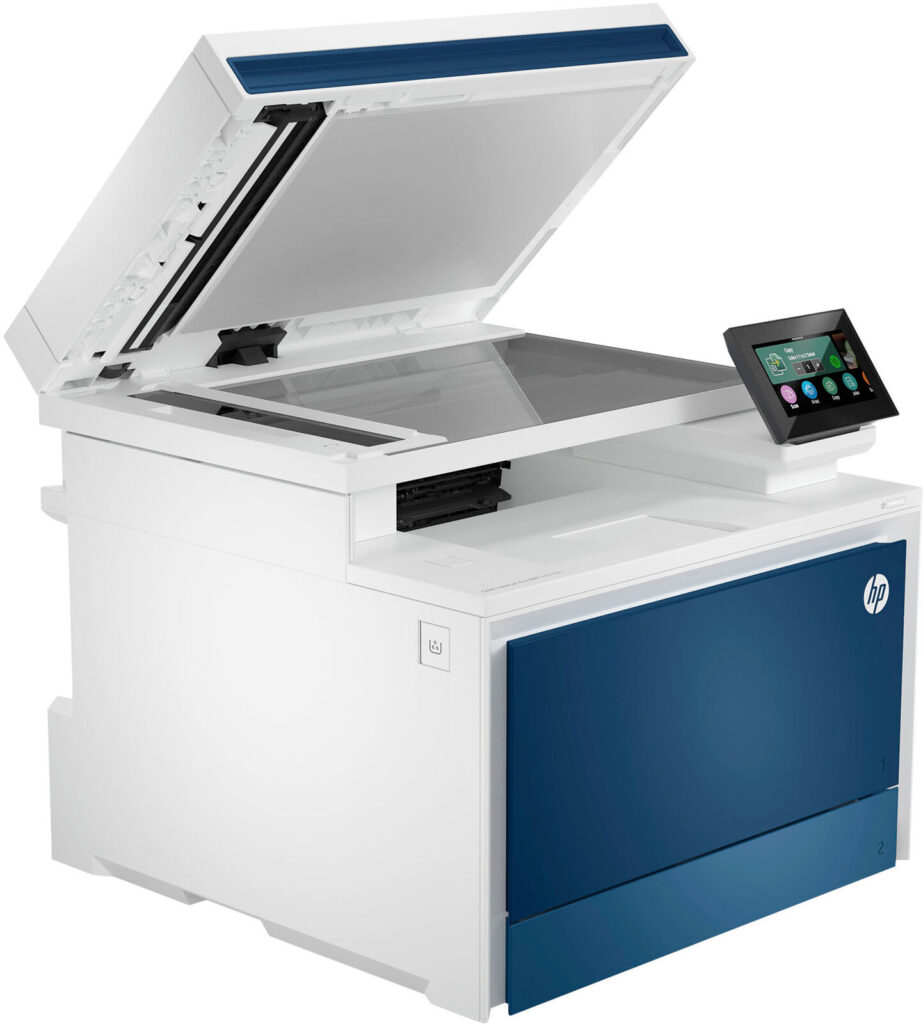The Rise of Eco-friendly Printers: How they’re changing the industry
Introduction to the Rise of Eco-friendly Printers
The world has witnessed the rise of eco-friendly printers, a significant advancement in the printing industry. These printers represent a conscious effort to reduce the environmental impact of printing, aligning with global sustainability goals. The importance of eco-friendly printers lies in their ability to minimize waste, conserve energy, and utilize sustainable materials like eco-friendly ink.
The history of eco-friendly printers can be traced back to the early efforts to reduce the harmful effects of traditional printing methods. Innovations such as the Epson EcoTank and supertank printers emerged as alternatives to conventional inkjet printers, reducing the need for frequent ink cartridge replacements. These developments marked a shift towards more environmentally friendly practices, setting a new standard for the industry.
The Current State of the Print Industry
The print industry today faces a multitude of environmental concerns. Traditional printing methods have been criticized for their excessive consumption of paper, energy, and non-biodegradable ink. Deforestation, air pollution, and waste accumulation are some of the pressing issues associated with conventional printing.
- Deforestation: The demand for paper has led to extensive deforestation, impacting ecosystems and contributing to climate change. United Nations on Sustainable Development emphasizes the need for responsible consumption of resources.
- Air Pollution: The use of petroleum-based inks releases harmful chemicals into the atmosphere, exacerbating air pollution.
- Waste Accumulation: Traditional ink cartridges contribute to significant waste, as they are often non-recyclable and end up in landfills.
These challenges have prompted the industry to seek innovative solutions. The introduction of eco-friendly products like supertank printers and all-in-one devices has begun to address these concerns, but the journey towards complete sustainability is far from over.
The Shift Towards Sustainability
The shift towards sustainability in the print industry is driven by both innovations and a re-examination of existing practices. The emergence of eco-friendly technologies and products has paved the way for a more responsible approach to printing.
- Innovations: New technologies such as Epson EcoTank and supertank printers have revolutionized the way we print. These printers use refillable tanks instead of traditional cartridges, reducing waste and offering a more environmentally friendly option. The use of vegetable-based inks further minimizes the environmental impact.
- Re-examinations: The industry is also re-evaluating its entire supply chain, from material sourcing to waste management. Efforts to use recycled paper, minimize energy consumption, and implement responsible disposal practices are part of this comprehensive approach.
The business motivations behind this shift are equally compelling. Companies are recognizing that adopting sustainable practices not only aligns with ethical responsibilities but also offers economic benefits. According to Forbes, businesses can take advantage of tax credits and financial incentives by becoming more sustainable. Moreover, the modern consumer’s preference for eco-friendly brands is driving companies to invest in friendly printer technologies and sustainable practices.
The rise of eco-friendly printers represents a significant step towards a more sustainable future for the print industry. Through continuous innovation, re-examination of practices, and strong business motivations, the industry is moving closer to achieving its goal of environmental responsibility. The journey is complex and challenging, but the commitment to creating a greener future is evident in the products and practices being adopted across the industry.
Sustainable Printing Practices
The shift towards sustainability in the print industry has led to the development of various innovative printing practices that are both efficient and environmentally responsible.
- UV Printing: UV printing utilizes ultraviolet lights to dry or cure ink as it’s printed. This method minimizes the environmental impact by reducing volatile organic compounds (VOCs) released into the atmosphere. UV printing also offers high-quality printing and is compatible with various materials, making it a versatile option.
- Digital Printing: Digital printing is a method that prints digital-based images directly onto various media. Unlike traditional printing methods, digital printing doesn’t require plates, reducing waste and energy consumption. The Epson EcoTank ET-3760 is an example of a digital inkjet printer that offers cartridge-free printing, further enhancing its eco-friendliness.
- Carbon Balanced Printing: This practice involves offsetting the carbon emissions produced during the printing process by investing in renewable energy projects or reforestation. Carbon balanced printing aligns with global efforts to reduce the carbon footprint and is an essential part of eco-friendly printing.
Eco-friendly Materials
The use of sustainable materials is a cornerstone of eco-friendly printing. From inks to paper, the industry is exploring various options to minimize environmental harm.
- Sustainable Printing Inks: Traditional inks often contain harmful solvents. The introduction of eco-solvent ink and vegetable-based inks has reduced the harmful emissions associated with printing. Eco-solvent printers like the Epson EcoTank Photo ET-8500 utilize these inks, offering quality printing with less environmental damage.
- Recycled Paper: Recycled paper is made from post-consumer waste and requires fewer resources to produce. It reduces the pressure on forests and minimizes waste in landfills. Many printer manufacturers now offer products specifically designed for printing on recycled paper, contributing to a more sustainable paper cycle.
- FSC Paper: The Forest Stewardship Council (FSC) certifies paper sourced from responsibly managed forests. Using FSC paper ensures that the paper consumption aligns with responsible forestry practices. World Land Trust on Carbon Balanced Paper provides more insights into sustainable paper sourcing.
Equipment and Design Practices
The sustainability of the print industry also depends on responsible equipment sourcing, design practices, and disposal.
- Equipment Sourcing and Disposal: Manufacturers are focusing on creating eco-friendly printers that use materials that can be recycled or repurposed. The Epson EcoTank ET-2850, for example, is designed for high-volume printing with refillable ink tanks, reducing the need for disposable cartridges.
- Design Reusability: Emphasizing modular designs that allow parts to be replaced or upgraded extends the life of the printer. This practice reduces waste and aligns with the principles of a circular economy.
Logistical and Workflow Automation
Efficient logistics and workflow automation are essential for reducing the environmental footprint of the print industry.
- Efficient Delivery System: Implementing efficient delivery systems that minimize fuel consumption and emissions is vital. Route optimization and the use of eco-friendly vehicles contribute to this efficiency.
- Inventory Management Solutions: Proper inventory management ensures that resources like ink bottles, paper trays, and other consumables are used optimally, reducing waste. Tools like Epson Scan and Epson Smart Panel help in managing these resources effectively.
The print industry’s sustainable practices encompass a wide range of innovations and re-evaluations. From employing new printing methods like UV and digital printing to utilizing eco-friendly materials and efficient logistics, the industry is making significant strides in reducing its environmental impact.
The integration of products like the Epson EcoTank ET-2720 and practices like 2-sided printing reflects a comprehensive approach to sustainability. The journey towards a fully sustainable print industry is ongoing, but the commitment to innovation and responsibility is clear, setting a positive example for other industries to follow.
Impact and Future of Sustainable Printing
Environmental Impact
The shift towards sustainable printing practices has profound implications for the environment. The industry’s commitment to reducing its ecological footprint is evident in several key areas:
- Deforestation: Traditional printing has contributed to deforestation, leading to loss of biodiversity and climate change. The use of recycled paper and FSC-certified paper in eco-friendly printing has helped mitigate this impact. By sourcing paper responsibly and promoting recycling, the industry is working to preserve forests and support sustainable forestry practices.
- Air Pollution: Conventional solvent inks emit volatile organic compounds (VOCs), contributing to air pollution. The introduction of eco-solvent ink and UV printing has reduced these emissions. Eco-solvent printers like the Epson EcoTank ET-3760 are designed to minimize harmful emissions, aligning with global efforts to improve air quality.
- Waste Management: The shift towards cartridge-free printing, refillable ink tanks, and ink bottle usage has significantly reduced waste. Products like the Epson EcoTank ET-2720 offer high-volume printing without the need for frequent cartridge replacement, minimizing waste and supporting recycling efforts.
These environmental impacts demonstrate the industry’s commitment to responsible practices. The focus on reducing deforestation, air pollution, and waste is not only ethical but also aligns with broader societal goals for sustainability.
Economic Impact
Sustainable printing practices also have significant economic implications. The industry’s shift towards eco-friendly solutions offers both immediate and long-term financial benefits:
- Cost Savings: Eco-friendly printers like the Epson EcoTank Photo ET-8500 offer cost-effective solutions. The use of replacement ink bottles and refillable ink tanks reduces ongoing expenses. Automatic two-sided printing and efficient ink usage further contribute to savings.
- Tax Credits and Incentives: Governments and organizations are offering tax credits and incentives to companies that adopt sustainable practices.
These economic impacts reflect a growing recognition that sustainability is not only an ethical choice but also a financially sound one. The cost savings and incentives associated with sustainable printing practices are driving more businesses to embrace these solutions.
Consumer Preferences
Consumer preferences are also shaping the future of sustainable printing. The demand for environmentally responsible products is influencing market trends and driving innovation:
- Demand for Environmentally Conscious Brands: Modern consumers are increasingly seeking out brands that align with their values. Products like the Epson EcoTank ET-2850, which offer quality printing with reduced environmental impact, are resonating with eco-conscious consumers.
- Market Trends: The popularity of eco-friendly printers and eco-solvent printing reflects broader market trends towards sustainability. From home office solutions to large format printing, the industry is responding to consumer demand for responsible products.
These consumer preferences underscore the importance of aligning business practices with societal values. The growing demand for sustainable products is not only shaping the industry but also reinforcing the broader movement towards environmental responsibility.
Future Prospects
The future of sustainable printing looks promising, with technological advancements and market predictions pointing towards continued growth and innovation:
- Technological Advancements: Innovations like the Epson EcoTank Photo ET-8500 and eco solvent ink are just the beginning. The industry continues to explore new technologies that reduce waste, improve efficiency, and minimize environmental harm. 2-sided printing, automatic document feeder systems, and 150-sheet paper capacity printers are examples of advancements that enhance functionality while supporting sustainability.
- Market Predictions: The success of products like the Epson EcoTank ET-3760 and the positive printer review feedback indicate a bright future for sustainable printing. The industry is expected to continue growing, with more manufacturers investing in eco-friendly printing solutions.
The impact and future of sustainable printing encompass a wide range of environmental, economic, and social considerations. The industry’s commitment to reducing its ecological footprint, coupled with the economic benefits and alignment with consumer preferences, paints a positive picture for the future.
The ongoing technological advancements and market trends suggest that sustainable printing will continue to evolve, setting new standards for responsibility and innovation. The journey towards a fully sustainable print industry is complex, but the progress made so far is a testament to the industry’s dedication and potential.
Case Studies and Real-world Applications
Companies Leading the Way
Several companies are at the forefront of implementing sustainable practices in the printing industry. Their commitment to environmental responsibility is evident in various aspects of their operations:
- Epson: Known for its EcoTank printers, Epson has been a pioneer in offering cartridge-free printing solutions. Their ink tank technology reduces waste and offers a more eco-friendly printing experience.
- HP: HP’s recycling program for ink cartridges and their investment in sustainable inkjet printer technology demonstrate their commitment to reducing the environmental impact of printing.
- Canon: Canon’s focus on energy efficiency and waste reduction, including the use of recycled paper and automatic two-sided printing, aligns with global sustainability goals.
These companies are not only leading by example but also influencing the entire industry to adopt more responsible practices.
Innovative Products and Solutions
The industry’s shift towards sustainability has led to the development of innovative products and technologies that are changing the way we print:
- Epson EcoTank ET-3760: This all-in-one printer offers high-volume printing without the need for frequent cartridge replacement. The refillable tanks and eco-solvent ink make it an environmentally responsible choice.
- HP Color LaserJet Pro MFP: Known for its energy efficiency and quality printing, this printer aligns with the trend towards more sustainable solutions.
- Automatic Document Feeder Systems: These systems enhance efficiency and reduce paper consumption, supporting the industry’s goals for sustainability.
These innovations reflect the industry’s commitment to continuous improvement and responsible practices.
Challenges and Lessons Learned
While the journey towards sustainable printing has seen significant success, it has not been without challenges. Real-world experiences offer valuable insights:
- Challenges with New Technologies: The introduction of new products like the Epson EcoTank Photo ET-8500 requires consumer education and adaptation. The shift from traditional cartridges to ink bottles and refillable ink tanks has been a learning curve for many users.
- Balancing Quality and Sustainability: Achieving print quality while maintaining sustainability has been a challenge. Products like the Epson EcoTank ET-2850 have managed to strike this balance, but it remains an ongoing focus for the industry.
- Success Stories: The positive reception of eco-friendly printers and the growth in demand for environmentally friendly printer options are success stories that underscore the industry’s progress.
The case studies and real-world applications of sustainable printing practices offer a comprehensive view of the industry’s progress, challenges, and successes. The leadership of major companies, the innovation in products and technologies, and the lessons learned from real-world experiences paint a picture of an industry that is committed to responsibility and continuous improvement. The journey towards full sustainability is complex, but the dedication and progress made so far are promising signs for the future.
What People Also Ask
What are eco-friendly printers?
Eco-friendly printers are designed to minimize environmental impact through various means such as using refillable ink tanks, reducing waste, and employing energy-efficient technologies. Products like the Epson EcoTank series exemplify this approach, offering high-quality printing while conserving resources.
Why is sustainability important in the print industry?
Sustainability in the print industry is vital to reduce deforestation, air pollution, and waste. By adopting eco-friendly practices, the industry aligns with global sustainability goals, preserves natural resources, and minimizes its environmental footprint. It also reflects a broader societal shift towards responsible consumption.
How are companies making printing more sustainable?
Companies are making printing more sustainable by developing innovative products like eco-solvent printers, utilizing recycled paper, implementing energy-efficient practices, and encouraging recycling. Major brands like Epson and HP are leading the way with their commitment to sustainable technologies and practices.
What are the challenges in implementing sustainable practices?
Implementing sustainable practices in printing involves challenges such as consumer adaptation to new technologies, balancing quality with sustainability, and the initial costs of adopting eco-friendly solutions. However, the industry’s progress and success stories demonstrate that these challenges are being addressed.
What is the future of sustainable printing?
The future of sustainable printing looks promising, with continuous technological advancements and growing consumer demand for environmentally responsible products. The industry’s commitment to innovation, coupled with economic incentives and alignment with global sustainability goals, suggests a bright future for eco-friendly printing.
Conclusion
The rise of eco-friendly printers and sustainable practices in the print industry represents a significant step towards a more responsible and sustainable future. From innovative technologies like the Epson EcoTank series to comprehensive efforts in reducing waste, air pollution, and deforestation, the industry is making remarkable strides.
The challenges are real, but the commitment to innovation, alignment with consumer preferences, and the success stories shared by leading companies paint a positive picture. The journey towards full sustainability is complex, but the dedication and progress made so far are promising signs for the future. It’s a call to action for all stakeholders to continue supporting and investing in sustainable printing practices.












